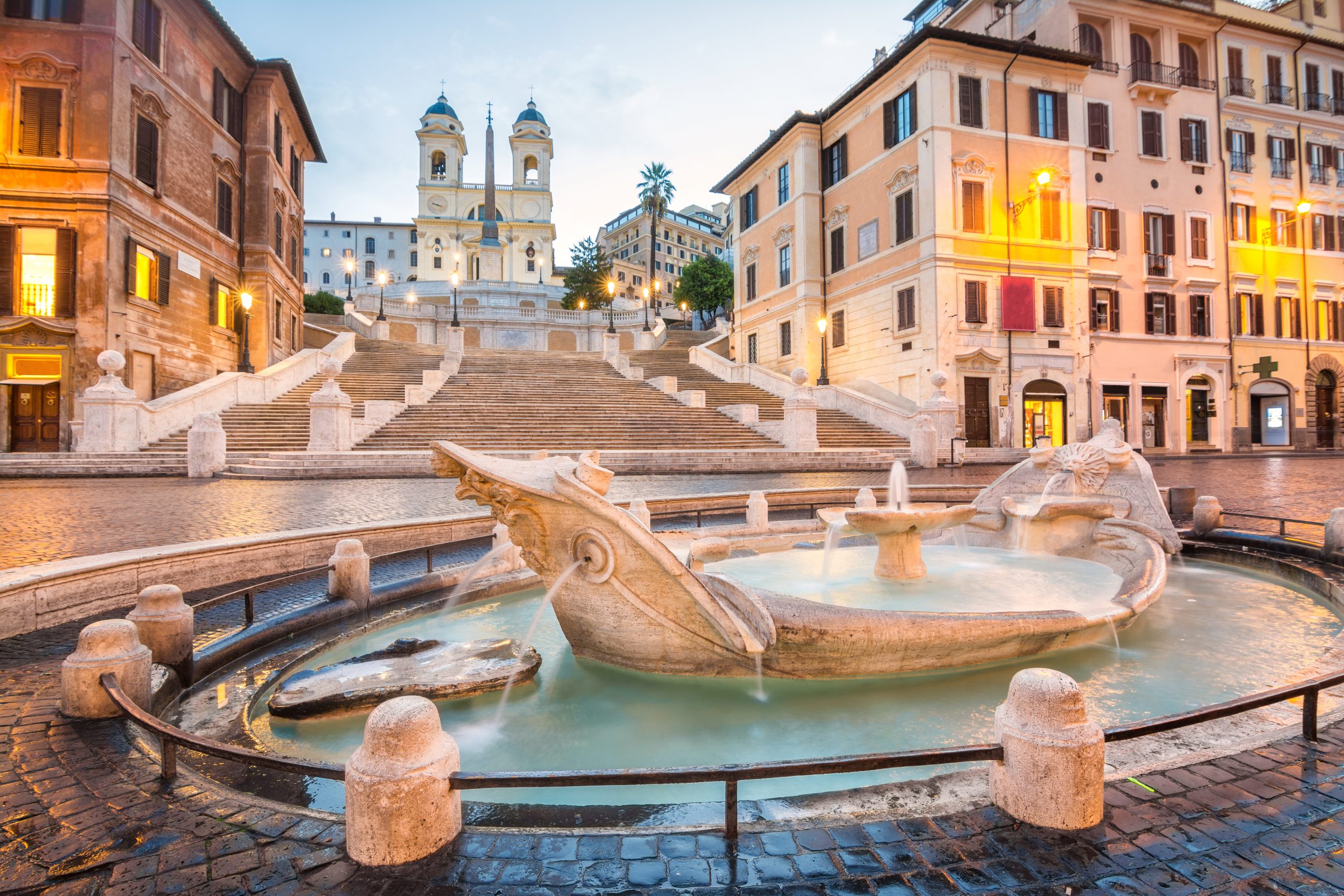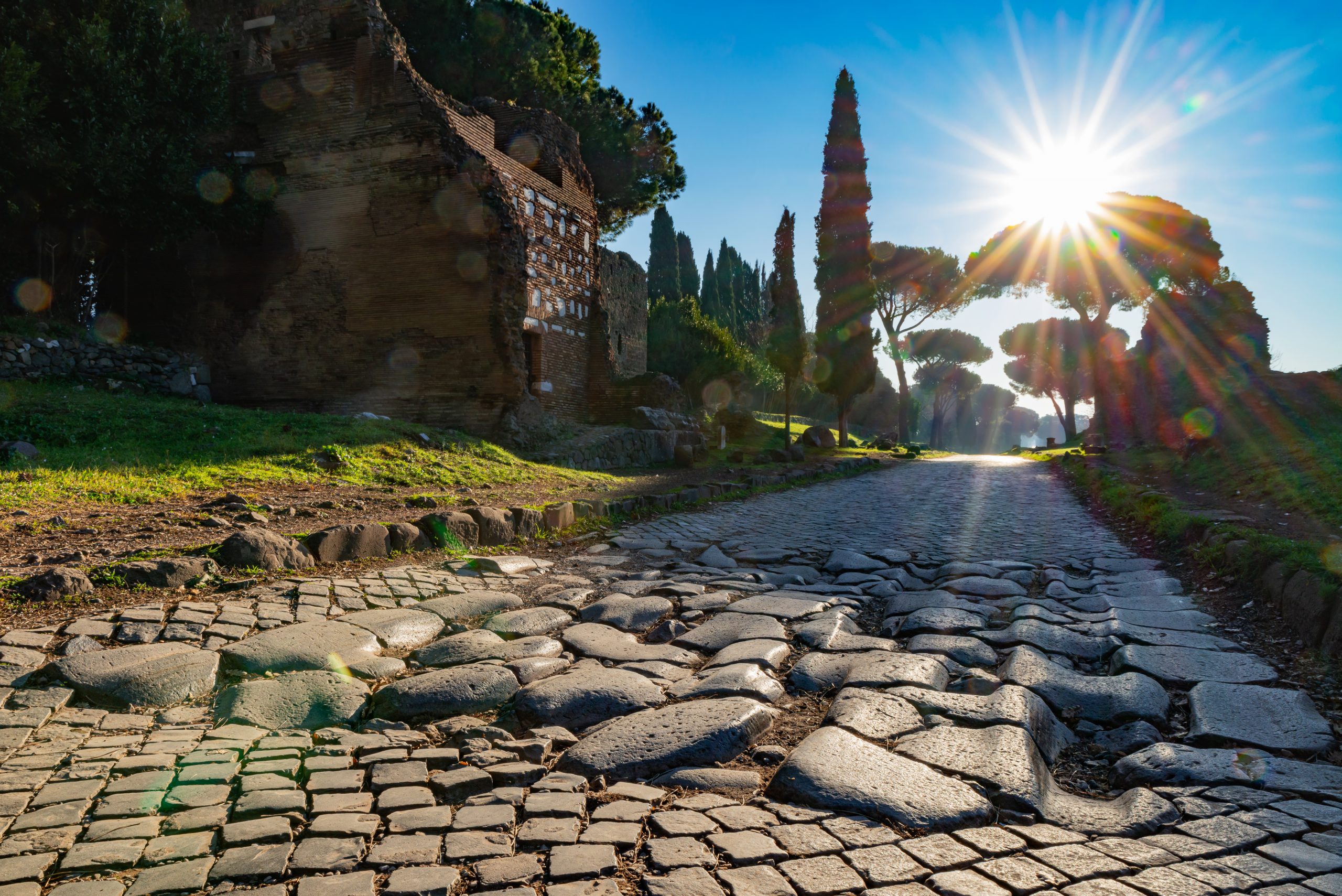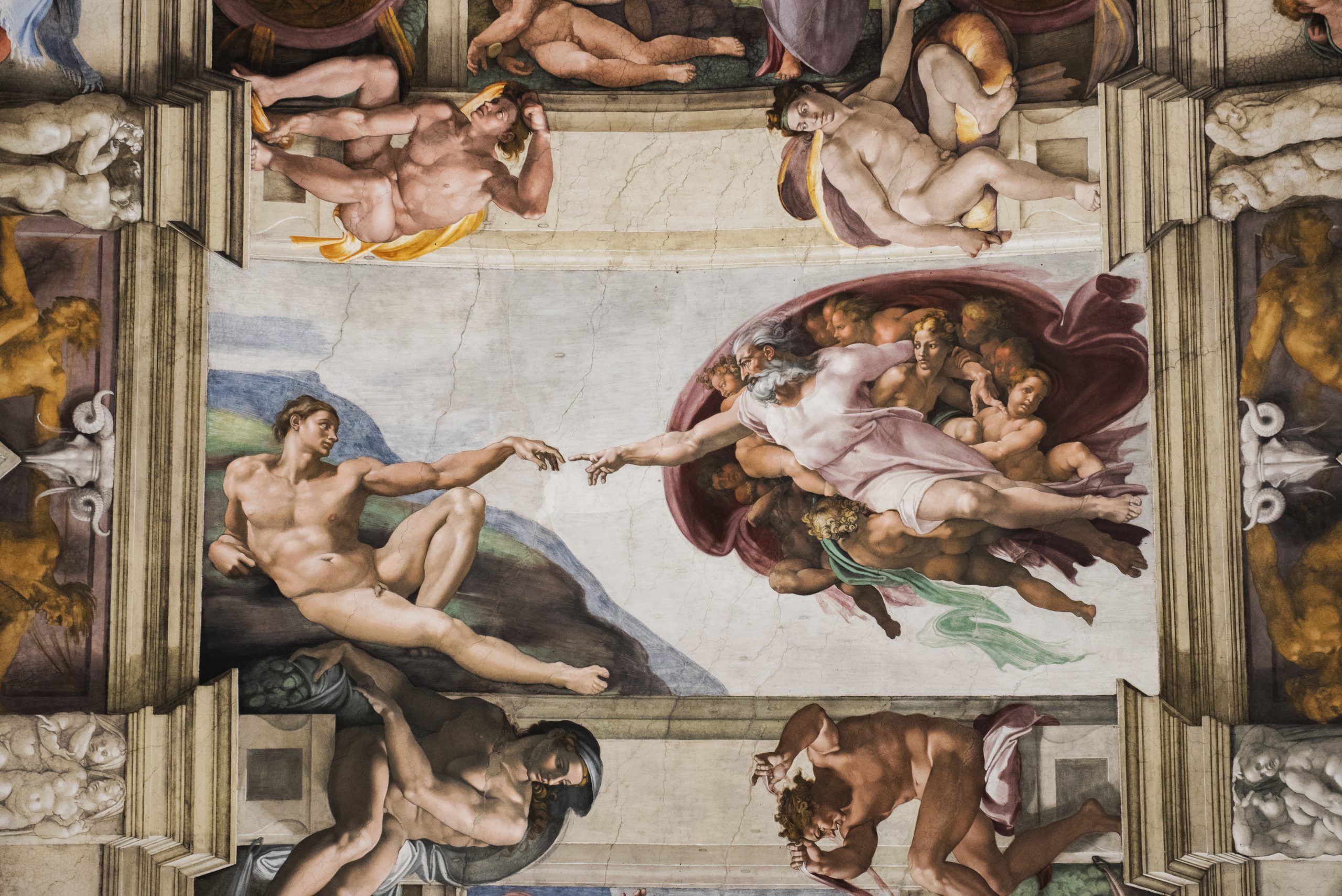Ostia Antica
Ostia Antica, was the harbour city of Ancient Rome. Often called the ‘Roman Pompeii’, this gem of an archaeological site offers a tranquil break from the pace of the city. Overlooked by tourists as it is not as well-known as Pompeii, Herculaneum or Ephesus, Ostia offers a rare glimpse into the life of an ordinary town. Wandering through the paved streets, apartment blocks and warehouses towering above allow the visitor to imagine the people that once thrived here. There are no coloured frescoes like in Pompeii, but there are plenty of black and white mosaics which remind us this was a working port town, there were wealthy traders and businessmen living in Ostia, but the coloured mosaics from their houses are no longer here; they have however been preserved in the Vatican museums so be sure to look down when you visit!
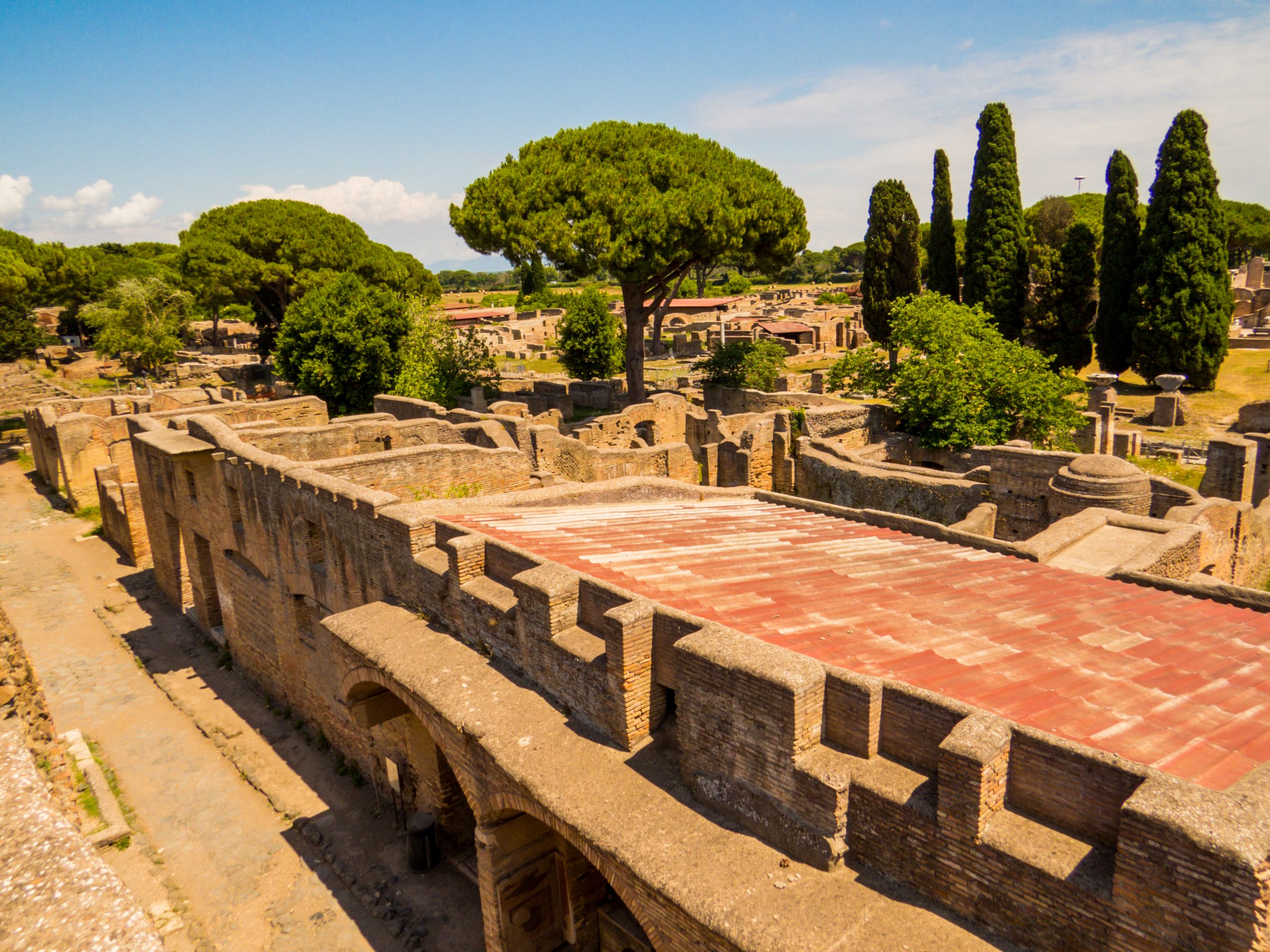
Ostia was the main port of Rome at the beginning of the empire, it was here that goods arrived from all over the Mediterranean and from farther afield; from grain, oil and wine to more precious, luxury items.
During ancient times the city was a thriving hub of activity supporting the city of Rome for around three hundred years. After Rome’s collapse, it was abandoned, silted over and is in an extraordinary state of preservation. Today visitors can explore the town and get a glimpse of how ordinary ancient Romans lived. The ruins are nestled among pine trees and offer a welcome break from the hustle and bustle of the city of Rome.
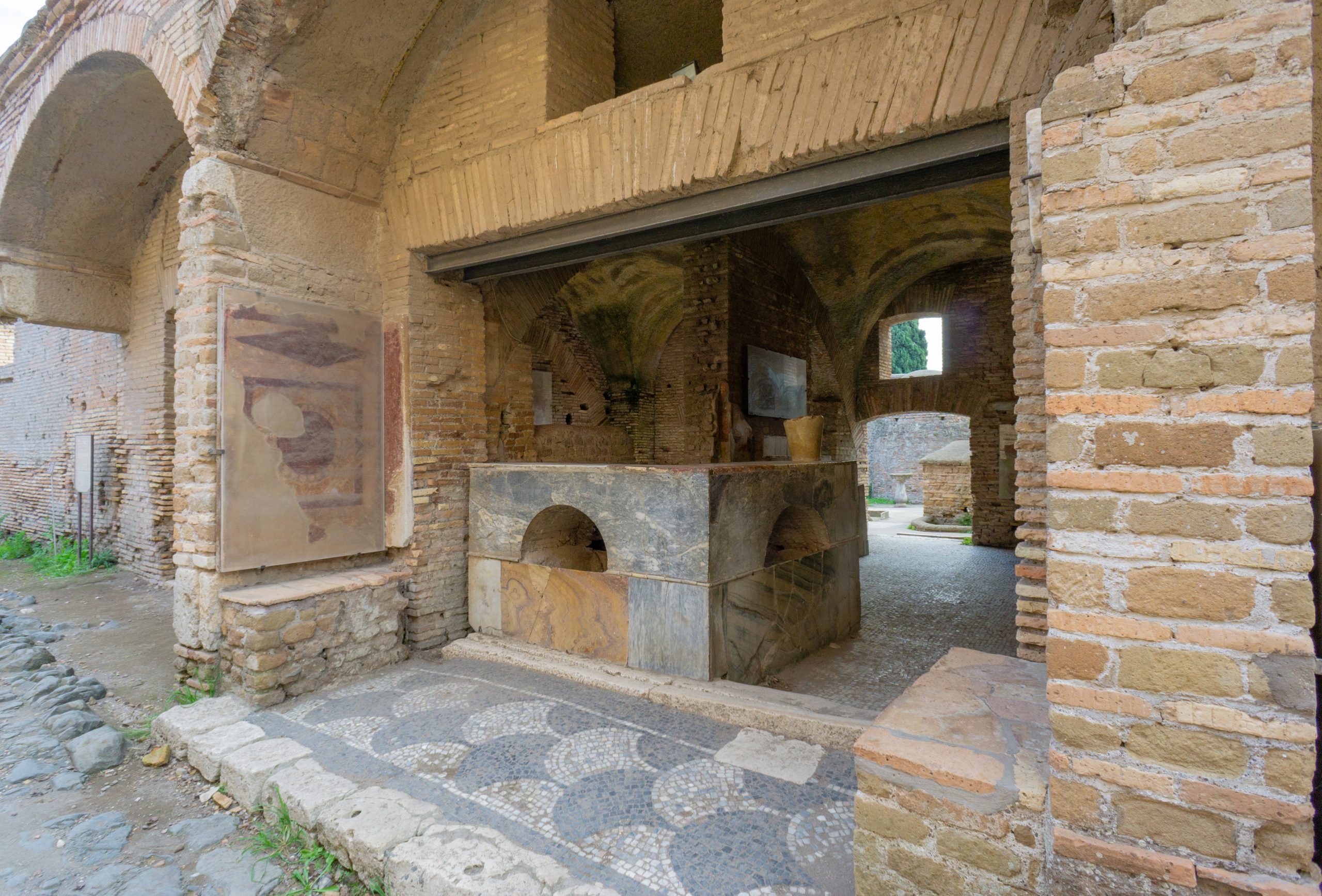
Highlights of the site are undoubtedly the Baths of Neptune, where from a raised platform you can see the monochrome mosaics of Neptune in his chariot and in the room beside him, his partner Amphitrite. The Theatre is truly impressive and is in excellent condition – it is still used today for modern performances; the only part missing is the grand stage building. Beside the theatre the huge square known as the Piazza of the Corporations is surrounded by offices used by different shipping traders and businesses, the mosaics reflect the type of trade or the location they shipped to.
The main street of Ostia Antica leads us past the remains of shopping arcades, public baths, apartment blocks and warehouses. Unlike Pompeii, the buildings in Ostia rise to three or four levels, we can still see the paving and pavements, stairwells that led to higher levels. We can imagine people in the shops and bars – particularly the Thermopolium or tavern with its street front bar with containers that would have been filled with food or drink. At the well-preserved Bakery we can still see the millstones for grinding flour and the ovens where bread was baked. At the centre of the town is the Forum, with the Capitoline temple still towers above the other buildings. Beside this are the remains of a huge complex of public baths, known as the Forum Baths, with the best-preserved public toilet in Europe!.
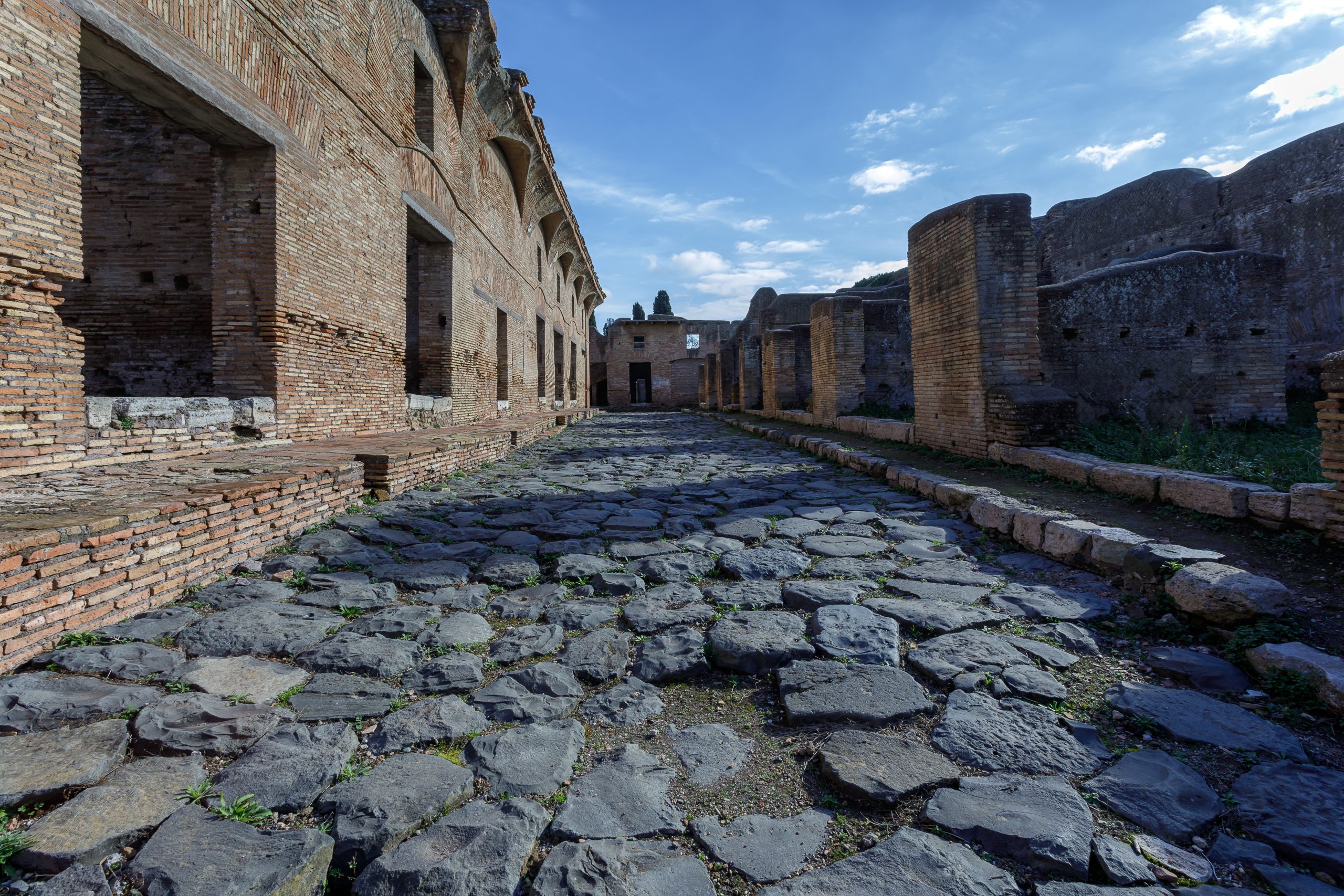
Past the Forum there is yet more to explore with tradeshops, a fishmonger’s with a huge marble table still in place, a fullonica or laundry and more bars. There are numerous temples in Ostia dating from Republican times to a Basilica in the fourth century. As well as temples, there are a number of Mithraeums – temples for the cult of Mithras.Ostia’s community would have been a melting pot of people from everywhere: deck hands from Spain and Carthage, tradesmen and merchants from Judaea and Egypt. This is attested by the Synagogue of Ostia, which was discovered in 1961 on the far edge of the site when a motorway to the airport was being built. The discovery meant archaeologists had to rethink the size of ancient Ostia and perhaps the dates as the synagogue is the earliest Synagogue in Europe.
Ostia Antica is 25 minutes from Rome by train, easily reached from the Lido train station at Porta San Paolo (next to the Piramide metro station).
